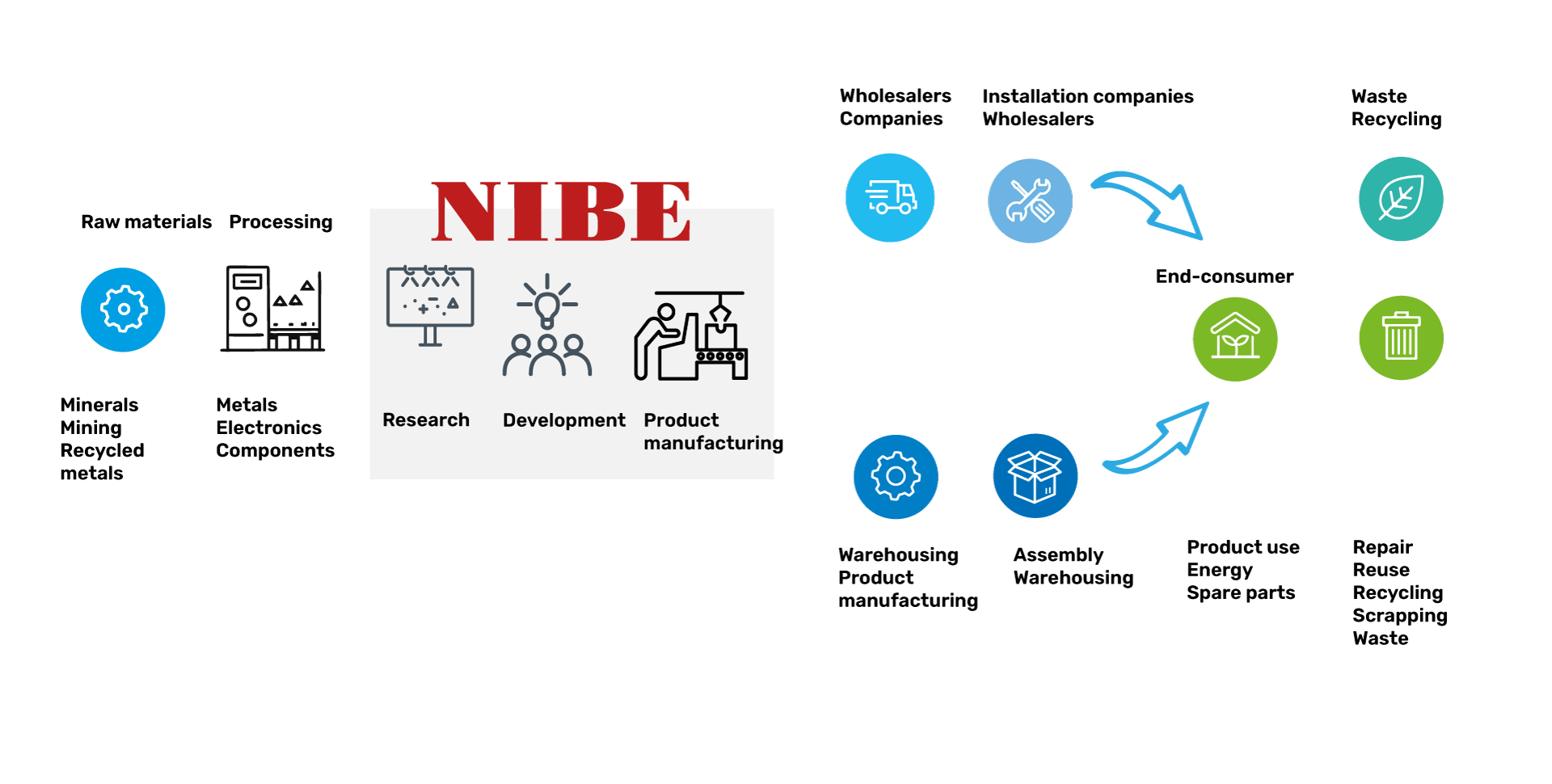Value Chain
NIBE’s business operations are based on strong relationships with suppliers, distribution partners and end-users, with sustainability and energy efficiency as core elements. Long-term collaborations enable us to ensure quality and delivery reliability throughout the value chain
NIBE has a long and complex value chain, which can make it difficult to ensure that there is no material impact on people and the environment. For a clearer picture of our climate impact in the value chain, we are working on improving the reliability of our Scope 3 calculations. By strengthening data collection and analysis methods, we are able to get a more exact and comprehensive picture of our indirect emissions in the value chain.
We also strive to promote a circular value chain. Factors stopping us from achieving our ambitions within the next few years are that access to low-cost, high-quality recycled and reused material is limited and that many countries where we operate do not have sufficiently well developed systems for recycling and reuse.
NIBEs stakeholders
In 2016, NIBE carried out the first extensive stakeholder dialog with a selection of external stakeholders.
In addition to sending a targeted survey to around 300 representatives of various stakeholder groups, we conducted several interviews and compiled data from internal experts within the Group. We then supplemented this data by continuously gathering information in connection with spontaneous communication with the various stakeholder groups, at face-to-face meetings or through questionnaires.
The purpose of our stakeholder dialog is to identify and understand the sustainability matters that are most important to our stakeholders. The outcomes of these analyses provide key inputs for the development of NIBE’s sustainability efforts, strategy and business model.
The continuous dialog enables us to adjust our strategy and strengthen our offering on a continuous basis. Examples of initiatives that have been implemented at the request of stakeholders include the development of life cycle assessments for our products, reporting according to CDP and our ambition to have our targets validated by the Science Based Target initiative (SBTi).
The insights from our stakeholders have also been analyzed and integrated into our due diligence process and our double materiality assessment, thus strengthening our efforts to meet both business and sustainability goals. NIBE’s administrative, management and supervisory bodies are informed of the relevant stakeholders’ views and interests connected to our sustainability-related areas at quarterly Board meetings.
STAKEHOLDER GROUP | DIALOG METHOD | MATERIAL MATTERS |
|---|---|---|
CUSTOMERS | Surveys Business dialog Contracts | Safe products Sustainable products Business relationships |
EMPLOYEES | Employee dialog | Security Expertise |
SUPPLIERS | Surveys Business dialogs Contracts | A long-term approach Performance |
INVESTORS/ANALYSTS | Surveys Quarterly reports Face-to-face meetings | Risk minimization Return A long-term approach Climate issues |
MANAGEMENT | Sustainability council | Management by objectives Focus areas Resources |
SHAREHOLDERS | General Meeting Face-to-face meetings Management discussion | Return A long-term approach Risk minimization |
AUTHORITIES | Reports Visits/Audits Lobbying | Laws and compliance with laws Human resource management Infrastructure |
LOCAL COMMUNITIES | Local collaboration Involvement in stakeholder groups | School partnerships Sponsorships Standard committee issues |
NIBEs Value Chain

